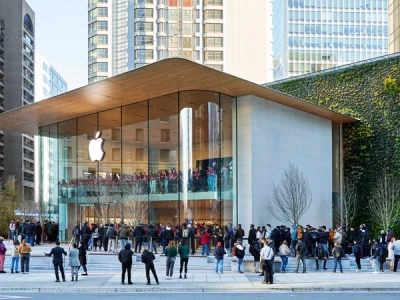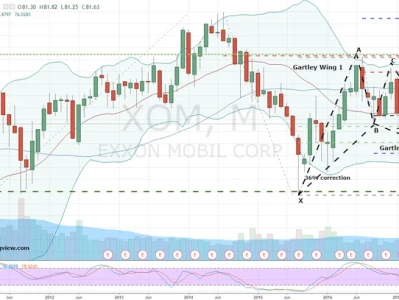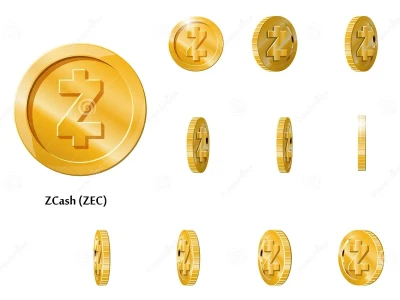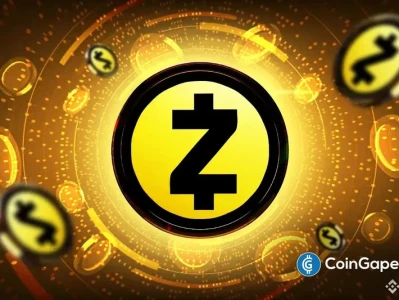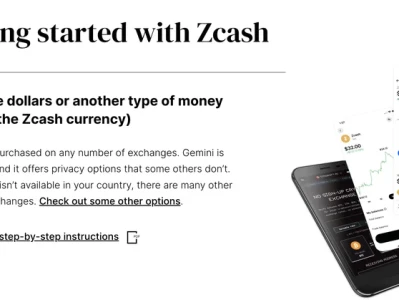Generated Title: Zcash's Parabolic Rise: A Privacy Rally on Borrowed Time?
The numbers surrounding Zcash (ZEC) lately are, on the surface, remarkable. A price appreciation from a quiet $50 in September to a peak of $388—an increase of 676%, to be more precise—is the kind of move that commands attention. It has become the top privacy-focused asset by market capitalization, a development that saw Zcash hits 8-year high, flips Monero to become top privacy coin at $6.2B, and has become a fixture on Crypto Twitter, amplified by bullish, if somewhat outlandish, predictions from figures like Arthur Hayes.
This isn't just a speculative surge detached from fundamentals. The on-chain data presents a compelling narrative of user adoption. The network's "shielded supply," the total amount of ZEC held in private addresses, has climbed to 4.5 million. This metric is significant because it represents active, intentional usage of Zcash’s core value proposition. Unlike simply holding a token in a wallet, shielding a coin requires a deliberate action, an opt-in to the privacy features powered by its zero-knowledge proofs. The growth is concentrated in Orchard, the network’s latest and most secure privacy protocol, suggesting this isn't dormant supply from early adopters but fresh, active engagement from users who trust the technology.
But I've looked at hundreds of these rallies, and my analysis always starts with a simple question: is the market pricing in the full picture? In the case of Zcash, the data reveals a profound, and perhaps fatal, contradiction. The very feature driving this explosive growth is the same one that places a hard, regulatory ceiling on its future.
The On-Chain Engine of Growth
To understand the current rally, one has to look past the price chart and at the network’s internal dynamics. The shielded supply is the single most important health metric for Zcash. Think of the Zcash network as having two types of streets: transparent boulevards where every transaction is visible to the public (like Bitcoin), and private, shielded alleyways where transactions are obscured. The shielded supply measures how much capital has moved off the public boulevards and into the private alleyways.
When this supply grows, it creates a larger "anonymity set." It’s a bit like trying to find a specific person in a small village versus a bustling metropolis. As more users shield their ZEC, the cryptographic "crowd" gets bigger, making it exponentially harder to deanonymize any single participant. This recent surge to 4.5 million ZEC indicates a growing trust in the platform's privacy guarantees, reinforcing its core utility. It's a feedback loop: more shielded coins lead to better privacy, which in turn attracts more users who want to shield their coins.
This isn't some "shitcoin," as one founder noted; it's a multi-billion dollar asset demonstrating real, verifiable usage of its primary feature. Further embedding ZEC into the broader DeFi ecosystem, a recent integration means that Unichain L2 adds support for non-EVM assets DOGE, XRP and Zcash, giving it a new venue for liquidity and utility. On a purely technical and on-chain basis, the narrative is strong. The engine is running smoothly, and by all internal metrics, the vehicle is accelerating.
But a high-performance engine is useless if you're not allowed to drive the car on the main roads. And this is the part of the analysis that I find genuinely troubling. The external environment for Zcash, and for all privacy-centric assets, is becoming increasingly hostile.

The Regulatory Brick Wall
While Zcash builds its privacy metropolis, global regulators are busy drawing a perimeter fence around it. The core conflict is unavoidable: regulators demand transparency for anti-money laundering (AML) and counter-terrorist financing (CTF) purposes, while Zcash is explicitly designed to break that transparency. This isn't a theoretical risk; it's an active, escalating reality.
Major exchanges have consistently shown their allergy to regulatory ambiguity. Venues have restricted or delisted privacy coins in the past, directly impacting Zcash. Some jurisdictions have moved from ambiguity to outright hostility. South Korea banned privacy coins from exchanges back in 2021, and Japanese regulators have pressured exchanges into delisting them. The most significant threat, however, looms in the European Union. The EU’s current AML regulations (set to be implemented by mid-2027) are widely expected to ban privacy-enhancing assets, effectively cutting Zcash off from a massive, developed market.
This puts Zcash on a completely different trajectory from Bitcoin. While Bitcoin has spent years becoming a mature, institutional-grade asset, culminating in the SEC's approval of spot ETFs in January 2024, Zcash is moving in the opposite direction. Bitcoin's regulatory path is one of broadening access and integration. Zcash's is one of narrowing on-ramps and exclusion.
Both assets share a scarcity model with a 21-million-coin cap, but that's where the comparison ends. Bitcoin’s value proposition is its simplicity and regulatory acceptance as a store of value. Zcash’s only key differentiator is privacy. So, what happens when that feature becomes a liability? At what point does the very thing that makes you unique also make you unemployable in the mainstream financial world?
The on-chain data reveals another subtle discrepancy. While the total number of ZEC holders grew an impressive 63% in one recent week, Nansen data showed that whale wallets were net sellers to the tune of $702,000 during that same period. This divergence between retail enthusiasm and large-holder distribution is a classic pattern. It suggests that while sentiment drives smaller players in, more sophisticated capital may be taking profits, perhaps because they see the long-term regulatory storm clouds gathering on the horizon. The recent technical analysis, which points to a potential correction down to the $268 support level after failing to break the $355 resistance, seems to confirm that the upward momentum is facing significant friction.
A Calculated Gamble on Anonymity
So, where does this leave us? The Zcash rally is not a mirage. It's fueled by genuine adoption of a powerful technology by a user base that clearly values financial privacy. The on-chain metrics are robust. But an asset's value is not determined in a vacuum. It is a function of its technology, its user base, and its relationship with the broader market and regulatory structure.
For Zcash, the latter is a glaring, unpriced risk. The current price action appears to be a sentiment-driven rally celebrating its technical strengths while conveniently ignoring its existential regulatory threats. It is an investment that requires one to believe that a decentralized, privacy-preserving network can outmaneuver a coordinated, global regulatory apparatus. That’s not an investment thesis; it’s a political one.
Zcash may well carve out an enduring niche for users who prioritize privacy above all else. But for an investor, the path forward looks less like a superhighway and more like a dead end. The current excitement feels temporary—a powerful but ultimately unsustainable decoupling from a market that is inexorably moving toward greater transparency and regulatory oversight.
